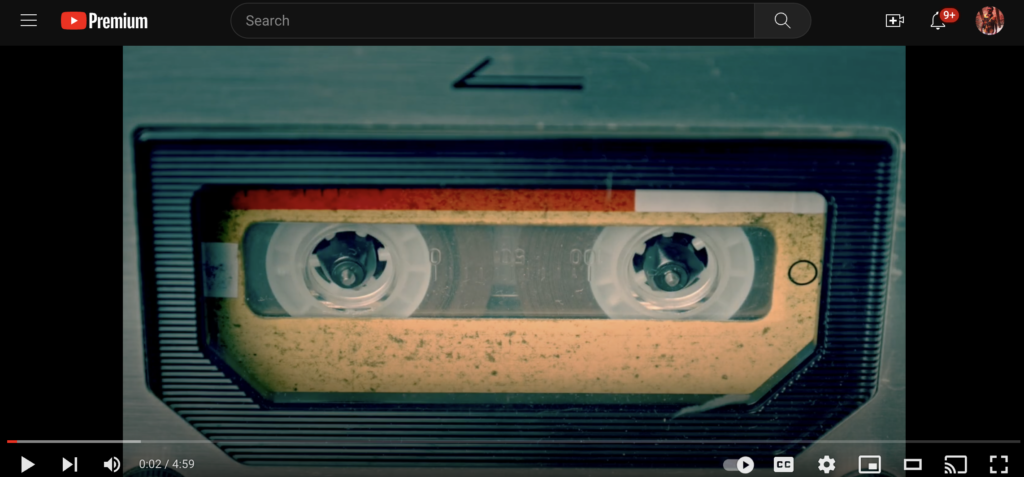
The sound of Success – Why Audio Works in Marketing and How to Use It to Your Advantage
History of Sound in film
Audio was first used in film in the late 1920s with the introduction of synchronized sound for movies, a technology known as “talkies.” The first feature-length film with synchronized sound was “The Jazz Singer,” released in 1927. The addition of sound revolutionized the film industry and transformed the movie-going experience.
Initially, some filmmakers and audiences were skeptical of the new technology, as silent films we the norm. However, the popularity of talkies quickly grew, and by the early 1930s, most films were made with synchronized sound. The use of sound allowed for the inclusion of dialogue, music, sound effects, and other audio elements, which helped to enhance the storytelling and emotional impact of movies. Since then, audio has continued to be an essential element of film, and technological advances have enabled filmmakers to create increasingly immersive and realistic soundscapes.
4 Tips to get you started
There are several advantages of using audio in your social media content, including:
1. Increased engagement: Incorporating audio into your social media content can increase engagement by providing a multi-sensory experience for your audience, which can help capture their attention and keep them interested.
2. Improved accessibility: Audio content can make your social media content more accessible to individuals who have visual impairments or who may prefer to consume content in an audio format.
3. Personalization: Audio content can help you create a more personalized experience for your audience by allowing them to hear your voice, tone, and personality, which can help build a stronger connection with your brand.
4. Versatility: Audio content can be used in a variety of ways on social media, including podcasts, interviews, music, sound effects, and more, which can help you experiment with different formats and find what works best for your brand.
Overall, incorporating audio into your social media content can help you create a more engaging and dynamic experience for your audience and improve your overall social media strategy.
Audio on a budget – Royalty-free music
Royalty-free music is music that is licensed for use in a video, film, or other media project for a one-time fee or without any fee at all. Here are some benefits of using royalty-free music:
- Cost-effective: Royalty-free music is often less expensive than licensed music because there are no ongoing royalties to pay. This can be especially beneficial for creators on a tight budget.
- Legal protection: Royalty-free music is typically licensed for use in a specific way, so it can provide legal protection to the creator who is using it. This means that the creator does not need to worry about copyright infringement, as long as they use the music according to the license terms.
- Wide variety of options: There are many sources of royalty-free music, so creators have a wide variety of options to choose from. This means that they can find music that fits the style and tone of their video, without having to worry about copyright issues.
- Flexibility: Royalty-free music can be used in a variety of projects, including commercial and non-commercial projects. This means that creators can use the music for multiple projects without having to worry about additional fees or licenses.
Lets explore Youtube for Royalty free music
YouTube can be a great resource for finding royalty-free music for use in your videos. Here are some steps you can follow to use YouTube to find royalty-free music:
- Go to the YouTube website and search for “royalty-free music”. This will bring up a list of videos and channels that offer free or low-cost royalty-free music.
- Narrow down your search by specifying the type of music you are looking for. For example, you can search for “royalty-free hip hop music” or “royalty-free background music”.
- Once you find a video or channel that offers royalty-free music, listen to the music to make sure it fits the tone and style of your video.
- Read the video description or channel information to learn about the license terms. Some channels or videos may require attribution, while others may have different terms for commercial and non-commercial use.
- Download the music and save it to your computer. Make sure you keep a record of where you downloaded the music from and the license terms for future reference.
- Use the music in your video project according to the license terms. For example, you may need to include attribution in your video or only use the music for non-commercial purposes.
It’s important to note that not all music on YouTube is royalty-free, so be sure to check the license terms before using any music in your videos. Additionally, it’s always a good idea to double-check the license terms with the original creator of the music if you have any questions or concerns.
The agency partner, Sean Beckingham put together a downloadable royalty-free
funk video.
Take a listen and feel FREE to use it!
What is hot in audio right now? ASMR
ASMR audio refers to audio content that produces a relaxing or tingling sensation in the listener, often referred to as “tingles.” ASMR stands for Autonomous Sensory Meridian Response. ASMR audio can be used in digital marketing campaigns as a way to engage with audiences and create a unique and memorable experience. By incorporating ASMR audio into your content, you may be able to enhance brand recognition and build a deeper connection with your audience. However, it’s important to note that ASMR may
not be effective or appropriate for all types of products or services.
Here are 5 tricks when using ASMR
- Wear headphones: ASMR sounds and whispers are often recorded in stereo, which can provide a more immersive and relaxing experience when listened to with headphones.
- Find your triggers: Experiment with different ASMR triggers, such as tapping, scratching, or whispering, to find which sounds or visual stimuli trigger your ASMR response.
- Relax your body: To enhance your ASMR experience, try to relax your body by taking deep breaths, closing your eyes, and releasing any muscle tension.
- Create a quiet space: Choose a quiet and comfortable space where you won’t be interrupted or distracted while listening to ASMR.
- Give it time: It can take a few minutes for your ASMR response to kick in, so be patient and give yourself time to fully relax and enjoy the experience.
Want to see hear ASMR in action?
We have been experimenting with ASMR at the agency for some time, getting success on TIKTOK = follow Jarritos Canada to hear it all
For some extra ASMR fun Check out our long-time agency friend Matt Basile Instagram account for his new product The Alchemy Grill.

